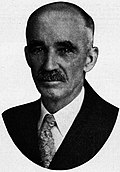November 8, 1932 | |||||||||||||||||
| |||||||||||||||||
 County results Berry: 40–50% 50–60% 60–70% 70–80% >90% Green: 50-60% 60-70% | |||||||||||||||||
| |||||||||||||||||
| Elections in South Dakota |
|---|
 |
The 1932 South Dakota gubernatorial election was held on November 8, 1932. Incumbent Republican Governor Warren Green ran for re-election to a second term. He defeated former Governor Carl Gunderson in the Republican primary and faced former State Representative Tom Berry, the Democratic nominee, in the general election. Aided by Democratic presidential nominee Franklin D. Roosevelt's landslide victory in South Dakota, Berry defeated Green for re-election in a landslide.

